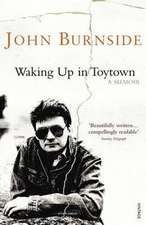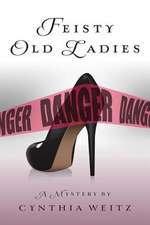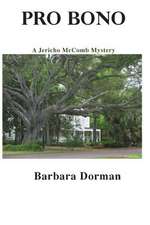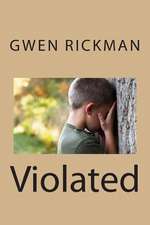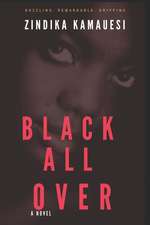The Glister: A Short Book about Darwin, Lincoln, and Modern Life
Autor John Burnsideen Limba Engleză Paperback – 31 ian 2010
Mysterious illnesses affect the inhabitants of the post-industrial village of Innertown, and a pervasive sense of malaise hangs everywhere. So when teenage boys disappear into the poisoned woods surrounding the village’s abandoned chemical plant, no one notices, or if they do, they don’t say a thing. Not even the town’s only cop, whose leads have long since died. To one boy, however, the chemical plant is beautiful, and it is there he will enact a plan to change the fate of the children of Innertown. To do so he will have to confront the blinding reality that burns in the chemical plant’s cavernous center.
| Toate formatele și edițiile | Preț | Express |
|---|---|---|
| Paperback (2) | 99.41 lei 6-8 săpt. | +7.74 lei 4-10 zile |
| Vintage Publishing – 7 mai 2009 | 105.88 lei 3-5 săpt. | +7.74 lei 4-10 zile |
| Anchor Books – 31 ian 2010 | 99.41 lei 6-8 săpt. |
Preț: 99.41 lei
Nou
Puncte Express: 149
Preț estimativ în valută:
19.02€ • 19.79$ • 15.71£
19.02€ • 19.79$ • 15.71£
Carte tipărită la comandă
Livrare economică 14-28 aprilie
Preluare comenzi: 021 569.72.76
Specificații
ISBN-13: 9780307455338
ISBN-10: 0307455335
Pagini: 255
Dimensiuni: 140 x 254 x 25 mm
Greutate: 0.3 kg
Editura: Anchor Books
ISBN-10: 0307455335
Pagini: 255
Dimensiuni: 140 x 254 x 25 mm
Greutate: 0.3 kg
Editura: Anchor Books
Notă biografică
John Burnside is the author of the novel The Devil's Footprints, the memoir A Lie About My Father, as well as five additional works of fiction and eleven collections of poetry published in the United Kingdom. The Asylum Dance won the Whitbread Poetry Award, The Light Trap was short-listed for the T.S. Eliot Prize, and A Lie About My Father won the two biggest Scottish literary prizes: the Scottish Arts Council Non-Fiction Book of the Year Award and the Saltire Society Scottish Book of the Year Award.
Extras
HOMELAND
In the beginning, John Morrison is working in his garden. Not the garden at the police house, which he has long neglected, and not the allotment he rented when he was first married, but the real garden, the only garden, the one he likes to think of as a shrine. A sacred place, like the garden in a medieval Resurrection. To anyone else, it would look like nothing more than a patch of flowers and baubles, set out in a clearing amid the poison wood, just above the old freight line; but then nobody else could ever see its significance. Morrison created this garden himself and he has maintained it for seven years: a neat square of poppies and carnations, dotted here and there with the knuckles of polished glass and stone that he collects on his long walks around the Innertown and the wasteland beyond, filling the pockets of his police uniform with worthless treasure as he pretends to go about his duties. Of course, these days, he has no real duties, or none he could ever believe in. Brian Smith saw to that, years ago, when Morrison made the one big mistake of his career--the one big mistake of his life, other than marriage.
That was the day when Smith talked him into concealing the first of the Innertown disappearances. Now, with five boys missing, Morrison is almost ashamed to show his face on the street. Not that anybody knows about the lie, the confidence trick, that he has perpetrated upon them all. People want to know where the Innertown children have gone, but aside from the families of the missing boys, nobody expects anything much from him. They know he doesn't have the training or the resources to track the boys down, and they also know that nobody beyond their poisoned tract of industrial ruin and coastal scrub cares a whit about what happens to the Innertown's children. Even the families give up after a while, sinking into mute bewilderment, or some sad regime of apathy and British sherry. After more than a decade of dwindling hopes for their town and for their children, people have become fatalistic, trying to find, in indifference, the refuge they once sought in the modest and mostly rather vague expectation of ordinary happiness that they were brought up to expect. Some choose to believe, or to say they believe, the official line--the line Morrison himself puts out, with more than a little help from Brian Smith. In this version of events, a story full of convenient and improbable coincidences, each of the boys left the Innertown of his own accord, independently and without speaking a word to anyone, to try his luck in the big wide world. Some say this story is credible, boys being boys. Others say it is far-fetched, that it seems most unlikely that all five of these bright children, boys in their mid-teens with families and friends, would wander off suddenly, and without warning. Among this group, there are those who say that the boys have, in fact, been murdered, and that they are probably buried somewhere in the ruins of the old chemical plant between the Innertown and the sea, where their mutilated bodies will decay quickly, leaving no trace that could be distinguished from the dead animals and anonymous offal that people find out there all the time. This latter group gets restless on occasion, usually just after a new disappearance. They demand a full investigation, they want independent outsiders to come in and conduct an official inquiry. They write letters; they make phone calls. Nothing happens.
Mostly, however, the town goes about its business; though, these days, it would seem that its sole business is slow decay. Of course, Morrison's business is to walk his beat, make himself visible, try to suggest that law and order means something in the Innertown. This is his function, to be seen--but Morrison hates to be seen, he wants to be invisible, he wants, more than anything, to disappear, and on this warm Saturday afternoon in late July, he is out at his secret garden, weeding and clearing so the few flowers he planted in the spring might not be smothered by grass and nettles. To begin with, this makeshift shrine had been dedicated to Mark Wilkinson, the first boy to disappear--the one that Morrison had, in fact, found. Later, though, it became more generic, a memorial to all the lost boys, wherever they might be. Nobody else knows about this garden, and Morrison always feels nervous coming out here, afraid of being caught out, afraid someone will guess what all this means. The shrine is fairly well concealed, because the event it commemorates happened, as such things must, in this hidden place, or somewhere nearby at least. Once, he found the little garden kicked apart and trampled, the flowers uprooted, the glass and stones scattered far and wide, but he guessed right away that this was nothing more than the usual vandalism. Some kids from the Innertown had come across his handiwork and smashed it without even thinking, in the routine way that kids from the Innertown have in everything they do, but Morrison is fairly sure that they hadn't realized what the shrine meant, and he simply built it up again, plant by plant, pebble by pebble, till it was, if anything, better than before. Whenever he can, he comes out here to maintain it. When yet another boy vanishes into the night, he extends it a little, adding new plants, new heaps of sand-polished glass and stone.
He finds the best stones on Stargell's Point, his favorite place nowadays, because nobody else ever goes there. Even the kids avoid it. Everybody understands, by now, that the entire land under their feet is irredeemably soured, poisoned by years of runoff and soakaway from the plant, but in most areas nobody quite knows the extent of that souring--whereas Stargell's Point was always recognized as a black spot, even back in the good old days, when the people believed, through sheer force of will, that the chemical plant was essentially safe. They believed, of course, because they had to believe: the Innertown's economy depended almost entirely upon the chemical industry. More to the point, there were people in the Outertown, up in the big houses, who had an interest in ensuring that things ticked over without too much fuss. The Innertown folk, the ones who actually worked at the plant, had from the outset been made aware of the appropriate precautions to be taken while going about their duties, but they had always been told--by the Consortium, by the safety people, by all the powers that be--that the danger was minimal. They had wanted to believe they were safe because there was nowhere else for them to go, and they had wanted to trust the managers and politicians because there was nobody else for them to trust. Naturally, they worked hard on being convinced. In the early days, some of them even smuggled home bags of the stuff they were making out at the plant so they could spread it on their gardens. It was an act of faith, utterly perverse and so, they hoped, all the more powerful.
Later, when it was too late, they began to see what was really going on. They heard the rumors about bribery in high places and anonymous death threats against potential whistle-blowers, they heard how the Consortium had influential contacts within the supposedly independent firms charged with the care and safety of the plant's workforce, but they hadn't known what to do about it. A few years after Morrison left school, the plant had finally been shut down, but its ruins were still standing out on the headland, all around the east side of the Innertown, acres and acres of dead real estate, running from the gutted administration buildings at the junction of East Road and Charity Street, through a series of vast, echoey kilns, warehouses, waste-processing units, and derelict production blocks, all the way to the loading docks on the shore, where great tankers rusted beside the slick, greasy waters of the firth. You could see evidence wherever you looked of the plant's effects on the land: avenues of dead trees, black and skeletal along the old rail tracks and access roads; great piles of sulfurous rocks where pools of effluent had been left to evaporate in the sun. A few keen fishermen found mutant sea creatures washed up on the shore, where those great boats had once been loaded with thousands and thousands of drums of who knew what, and some people claimed that they had seen bizarre animals out in the remaining tracts of woodland, not sick, or dying, but not right either, with their enlarged faces and swollen, twisted bodies.
The most convincing evidence that some evil was being perpetrated on the headland, however, was the fact that, for as long as the plant had existed, the people themselves had not been right. Suddenly, there were unexplained clusters of rare cancers. Children contracted terrible diseases, or they developed mysterious behavioral problems. There was more than the usual share of exotic or untreatable illnesses, a sudden and huge increase in depression, a blossoming of what, in the old days, would have been called madness. Morrison's own wife had got sick in the head and, even now, nobody was able to say what was wrong with her. She drank, was the cruelest explanation, but she had been a drinker in her younger days and she had been fit as a fiddle back then.
Now, everybody blames these problems on the plant, but they don't have the energy to do anything about it. The plant had been their livelihood; it had been their best hope. Everyone knew its history, in the official version at least. People could tell you how, thirty years ago, a consortium--it had a fancy name, but it was always referred to, simply, as the Consortium--a local and international consortium of agricultural and other companies, started making various products there, but nobody remembers, now, and it seems that nobody really knew back then exactly what chemicals were manufactured, or what they were used for. Morrison's father, James, had worked at the plant, and he would insist that it was all harmless agricultural material: fertilizers and pesticides, fungicides, growth accelerants or growth retardants, complicated chains of molecules that got into the root or the stem of a plant and changed how it grew, or when it flowered, or whether it set seed. Other people said it was more sinister than that: maybe the bulk of what they processed out on the headland was innocent enough, but there were special facilities, hidden deep inside the plant, where they made, or stored, chemical weapons. After all, they would argue, it doesn't take much to change one substance into another; break a chain of molecules here, add an extra chain there, and what had been a mildly dangerous herbicide became a weapon of war; alter the temperature, or the structure, or the pressure, and stuff that you had once bought over the counter in the local hardware shop was transformed into a battlefield poison. To this day, they would claim, there are sealed buildings that nobody, not even the safety inspectors, was ever allowed to enter.
After a while, when the children started to vanish, new theories were put forward. The boys had stumbled into one of those secret facilities and been consumed by a cloud of lethal gas; or they had been taken away for tests, either by top-secret government scientists, or by aliens, who had been observing the plant for decades. Morrison has always known that this is all pointless speculation, of course, because he knows the truth about the disappearances. Or rather, he knows the truth in one case because, on a cold autumn night seven years ago, it was his bad luck to find Mark Wilkinson suspended from a tree, a few yards from the spot where he now stands. A few yards, no more, from this raggedy patch of garden flowers and colored glass where he lingers beside a phantom grave, trying to think of something to say. It isn't prayer he intends, on these visits, so much as some form of communion: he wants, not to send Mark's soul into some happy otherness, but to hold it back long enough for the boy to understand and, so, forgive.
Morrison was never very much convinced by the idea, taught to him in Sunday school, that forgiveness comes from God; he could never see why God needed to forgive us our trespasses, when He was the one who made us how we are. Even as a boy, however, he had believed in the forgiveness of the dead. When he was little, his mother would take him on Sunday walks to the cemetery on the West Side of the Innertown, not far from where the better-off people lived. James Morrison wouldn't come, he'd always be too busy, but his wife would lead young John and his little sister out to the Innertown cemetery, and all three would sit down on one of the benches dressed in their Sunday best to enjoy a picnic lunch by their grandmother's headstone. It would be a quiet meal, solemn, though not at all morbid. Afterward, out of respect for the dead, Morrison would pick up every spilled eggshell, every curl of orange peel. The dead fascinated him by the way they lived on, alone in their names, each one separate from the others, and he wanted to erase any trace that he, or his family, might leave in their solitary domain. Once, when he was fifteen, he had gone for a walk in the cemetery with his first girlfriend, a slightly plain but funny, generous-hearted girl called Gwen. He'd intended it to be nothing more than a walk, but almost as soon as they passed through the cemetery gates she had grabbed hold of his arm and kissed him, right there, among the gravestones and the rhododendrons. That kiss hadn't quite worked because they hadn't tried this before, both of them shy and Morrison not sure if he liked Gwen as much for her looks as he did for her personality. That was why he had hesitated, probably; but the truth was that, at first, he hadn't wanted to go on, with the dead all around him, watching from their separate resting places across the cemetery. He'd tried again, though, for the girl's sake, and this time they did it right, Gwen tilting her head like they did in the movies, so their noses didn't get in the way. After that, they kissed for a long time, maybe a minute, not quite knowing how to stop once they had got started.
As soon as he and Gwen parted, however, that kiss began to worry him. He didn't want to upset or insult the dead, because they were alone in some silent otherness--and that, he had realized, was why they could forgive us. He'd never had any doubt that the dead were better for being dead: they were beyond all the petty concerns and trivial disputes and anxieties that trouble the living. They breathed with God. That was how Morrison had imagined them as a child: breathing God's air, but never seeing Him, always alone. It was up to them to watch us, dispassionately, from a distance, and they forgave us the more easily for that. It wasn't God's job to forgive, it was theirs. They saw, and they understood, but God couldn't understand because God's standards were so high, and because He always got so bloody wrathful, smiting and striking down here, there, and everywhere. So, being perfect, He gave the job of forgiveness to the dead. It was logical, when you thought about it. Morrison liked to think of it as a form of delegation.
From the Hardcover edition.
In the beginning, John Morrison is working in his garden. Not the garden at the police house, which he has long neglected, and not the allotment he rented when he was first married, but the real garden, the only garden, the one he likes to think of as a shrine. A sacred place, like the garden in a medieval Resurrection. To anyone else, it would look like nothing more than a patch of flowers and baubles, set out in a clearing amid the poison wood, just above the old freight line; but then nobody else could ever see its significance. Morrison created this garden himself and he has maintained it for seven years: a neat square of poppies and carnations, dotted here and there with the knuckles of polished glass and stone that he collects on his long walks around the Innertown and the wasteland beyond, filling the pockets of his police uniform with worthless treasure as he pretends to go about his duties. Of course, these days, he has no real duties, or none he could ever believe in. Brian Smith saw to that, years ago, when Morrison made the one big mistake of his career--the one big mistake of his life, other than marriage.
That was the day when Smith talked him into concealing the first of the Innertown disappearances. Now, with five boys missing, Morrison is almost ashamed to show his face on the street. Not that anybody knows about the lie, the confidence trick, that he has perpetrated upon them all. People want to know where the Innertown children have gone, but aside from the families of the missing boys, nobody expects anything much from him. They know he doesn't have the training or the resources to track the boys down, and they also know that nobody beyond their poisoned tract of industrial ruin and coastal scrub cares a whit about what happens to the Innertown's children. Even the families give up after a while, sinking into mute bewilderment, or some sad regime of apathy and British sherry. After more than a decade of dwindling hopes for their town and for their children, people have become fatalistic, trying to find, in indifference, the refuge they once sought in the modest and mostly rather vague expectation of ordinary happiness that they were brought up to expect. Some choose to believe, or to say they believe, the official line--the line Morrison himself puts out, with more than a little help from Brian Smith. In this version of events, a story full of convenient and improbable coincidences, each of the boys left the Innertown of his own accord, independently and without speaking a word to anyone, to try his luck in the big wide world. Some say this story is credible, boys being boys. Others say it is far-fetched, that it seems most unlikely that all five of these bright children, boys in their mid-teens with families and friends, would wander off suddenly, and without warning. Among this group, there are those who say that the boys have, in fact, been murdered, and that they are probably buried somewhere in the ruins of the old chemical plant between the Innertown and the sea, where their mutilated bodies will decay quickly, leaving no trace that could be distinguished from the dead animals and anonymous offal that people find out there all the time. This latter group gets restless on occasion, usually just after a new disappearance. They demand a full investigation, they want independent outsiders to come in and conduct an official inquiry. They write letters; they make phone calls. Nothing happens.
Mostly, however, the town goes about its business; though, these days, it would seem that its sole business is slow decay. Of course, Morrison's business is to walk his beat, make himself visible, try to suggest that law and order means something in the Innertown. This is his function, to be seen--but Morrison hates to be seen, he wants to be invisible, he wants, more than anything, to disappear, and on this warm Saturday afternoon in late July, he is out at his secret garden, weeding and clearing so the few flowers he planted in the spring might not be smothered by grass and nettles. To begin with, this makeshift shrine had been dedicated to Mark Wilkinson, the first boy to disappear--the one that Morrison had, in fact, found. Later, though, it became more generic, a memorial to all the lost boys, wherever they might be. Nobody else knows about this garden, and Morrison always feels nervous coming out here, afraid of being caught out, afraid someone will guess what all this means. The shrine is fairly well concealed, because the event it commemorates happened, as such things must, in this hidden place, or somewhere nearby at least. Once, he found the little garden kicked apart and trampled, the flowers uprooted, the glass and stones scattered far and wide, but he guessed right away that this was nothing more than the usual vandalism. Some kids from the Innertown had come across his handiwork and smashed it without even thinking, in the routine way that kids from the Innertown have in everything they do, but Morrison is fairly sure that they hadn't realized what the shrine meant, and he simply built it up again, plant by plant, pebble by pebble, till it was, if anything, better than before. Whenever he can, he comes out here to maintain it. When yet another boy vanishes into the night, he extends it a little, adding new plants, new heaps of sand-polished glass and stone.
He finds the best stones on Stargell's Point, his favorite place nowadays, because nobody else ever goes there. Even the kids avoid it. Everybody understands, by now, that the entire land under their feet is irredeemably soured, poisoned by years of runoff and soakaway from the plant, but in most areas nobody quite knows the extent of that souring--whereas Stargell's Point was always recognized as a black spot, even back in the good old days, when the people believed, through sheer force of will, that the chemical plant was essentially safe. They believed, of course, because they had to believe: the Innertown's economy depended almost entirely upon the chemical industry. More to the point, there were people in the Outertown, up in the big houses, who had an interest in ensuring that things ticked over without too much fuss. The Innertown folk, the ones who actually worked at the plant, had from the outset been made aware of the appropriate precautions to be taken while going about their duties, but they had always been told--by the Consortium, by the safety people, by all the powers that be--that the danger was minimal. They had wanted to believe they were safe because there was nowhere else for them to go, and they had wanted to trust the managers and politicians because there was nobody else for them to trust. Naturally, they worked hard on being convinced. In the early days, some of them even smuggled home bags of the stuff they were making out at the plant so they could spread it on their gardens. It was an act of faith, utterly perverse and so, they hoped, all the more powerful.
Later, when it was too late, they began to see what was really going on. They heard the rumors about bribery in high places and anonymous death threats against potential whistle-blowers, they heard how the Consortium had influential contacts within the supposedly independent firms charged with the care and safety of the plant's workforce, but they hadn't known what to do about it. A few years after Morrison left school, the plant had finally been shut down, but its ruins were still standing out on the headland, all around the east side of the Innertown, acres and acres of dead real estate, running from the gutted administration buildings at the junction of East Road and Charity Street, through a series of vast, echoey kilns, warehouses, waste-processing units, and derelict production blocks, all the way to the loading docks on the shore, where great tankers rusted beside the slick, greasy waters of the firth. You could see evidence wherever you looked of the plant's effects on the land: avenues of dead trees, black and skeletal along the old rail tracks and access roads; great piles of sulfurous rocks where pools of effluent had been left to evaporate in the sun. A few keen fishermen found mutant sea creatures washed up on the shore, where those great boats had once been loaded with thousands and thousands of drums of who knew what, and some people claimed that they had seen bizarre animals out in the remaining tracts of woodland, not sick, or dying, but not right either, with their enlarged faces and swollen, twisted bodies.
The most convincing evidence that some evil was being perpetrated on the headland, however, was the fact that, for as long as the plant had existed, the people themselves had not been right. Suddenly, there were unexplained clusters of rare cancers. Children contracted terrible diseases, or they developed mysterious behavioral problems. There was more than the usual share of exotic or untreatable illnesses, a sudden and huge increase in depression, a blossoming of what, in the old days, would have been called madness. Morrison's own wife had got sick in the head and, even now, nobody was able to say what was wrong with her. She drank, was the cruelest explanation, but she had been a drinker in her younger days and she had been fit as a fiddle back then.
Now, everybody blames these problems on the plant, but they don't have the energy to do anything about it. The plant had been their livelihood; it had been their best hope. Everyone knew its history, in the official version at least. People could tell you how, thirty years ago, a consortium--it had a fancy name, but it was always referred to, simply, as the Consortium--a local and international consortium of agricultural and other companies, started making various products there, but nobody remembers, now, and it seems that nobody really knew back then exactly what chemicals were manufactured, or what they were used for. Morrison's father, James, had worked at the plant, and he would insist that it was all harmless agricultural material: fertilizers and pesticides, fungicides, growth accelerants or growth retardants, complicated chains of molecules that got into the root or the stem of a plant and changed how it grew, or when it flowered, or whether it set seed. Other people said it was more sinister than that: maybe the bulk of what they processed out on the headland was innocent enough, but there were special facilities, hidden deep inside the plant, where they made, or stored, chemical weapons. After all, they would argue, it doesn't take much to change one substance into another; break a chain of molecules here, add an extra chain there, and what had been a mildly dangerous herbicide became a weapon of war; alter the temperature, or the structure, or the pressure, and stuff that you had once bought over the counter in the local hardware shop was transformed into a battlefield poison. To this day, they would claim, there are sealed buildings that nobody, not even the safety inspectors, was ever allowed to enter.
After a while, when the children started to vanish, new theories were put forward. The boys had stumbled into one of those secret facilities and been consumed by a cloud of lethal gas; or they had been taken away for tests, either by top-secret government scientists, or by aliens, who had been observing the plant for decades. Morrison has always known that this is all pointless speculation, of course, because he knows the truth about the disappearances. Or rather, he knows the truth in one case because, on a cold autumn night seven years ago, it was his bad luck to find Mark Wilkinson suspended from a tree, a few yards from the spot where he now stands. A few yards, no more, from this raggedy patch of garden flowers and colored glass where he lingers beside a phantom grave, trying to think of something to say. It isn't prayer he intends, on these visits, so much as some form of communion: he wants, not to send Mark's soul into some happy otherness, but to hold it back long enough for the boy to understand and, so, forgive.
Morrison was never very much convinced by the idea, taught to him in Sunday school, that forgiveness comes from God; he could never see why God needed to forgive us our trespasses, when He was the one who made us how we are. Even as a boy, however, he had believed in the forgiveness of the dead. When he was little, his mother would take him on Sunday walks to the cemetery on the West Side of the Innertown, not far from where the better-off people lived. James Morrison wouldn't come, he'd always be too busy, but his wife would lead young John and his little sister out to the Innertown cemetery, and all three would sit down on one of the benches dressed in their Sunday best to enjoy a picnic lunch by their grandmother's headstone. It would be a quiet meal, solemn, though not at all morbid. Afterward, out of respect for the dead, Morrison would pick up every spilled eggshell, every curl of orange peel. The dead fascinated him by the way they lived on, alone in their names, each one separate from the others, and he wanted to erase any trace that he, or his family, might leave in their solitary domain. Once, when he was fifteen, he had gone for a walk in the cemetery with his first girlfriend, a slightly plain but funny, generous-hearted girl called Gwen. He'd intended it to be nothing more than a walk, but almost as soon as they passed through the cemetery gates she had grabbed hold of his arm and kissed him, right there, among the gravestones and the rhododendrons. That kiss hadn't quite worked because they hadn't tried this before, both of them shy and Morrison not sure if he liked Gwen as much for her looks as he did for her personality. That was why he had hesitated, probably; but the truth was that, at first, he hadn't wanted to go on, with the dead all around him, watching from their separate resting places across the cemetery. He'd tried again, though, for the girl's sake, and this time they did it right, Gwen tilting her head like they did in the movies, so their noses didn't get in the way. After that, they kissed for a long time, maybe a minute, not quite knowing how to stop once they had got started.
As soon as he and Gwen parted, however, that kiss began to worry him. He didn't want to upset or insult the dead, because they were alone in some silent otherness--and that, he had realized, was why they could forgive us. He'd never had any doubt that the dead were better for being dead: they were beyond all the petty concerns and trivial disputes and anxieties that trouble the living. They breathed with God. That was how Morrison had imagined them as a child: breathing God's air, but never seeing Him, always alone. It was up to them to watch us, dispassionately, from a distance, and they forgave us the more easily for that. It wasn't God's job to forgive, it was theirs. They saw, and they understood, but God couldn't understand because God's standards were so high, and because He always got so bloody wrathful, smiting and striking down here, there, and everywhere. So, being perfect, He gave the job of forgiveness to the dead. It was logical, when you thought about it. Morrison liked to think of it as a form of delegation.
From the Hardcover edition.
Recenzii
“Brilliant. . . . Beautiful and frightening.” —The New York Times Book Review
“Haunting. . . . [A] darkly beautiful meditation on death, guilt and redemption.” —The Los Angeles Times Book Review
“A deeply philosophical tale that goes right to the heart of existence and what one must to do, despite circumstances, to retain humanity.”—St. Petersburg Times
"Burnside builds mood and atmosphere with fearsome skill." —Chicago-Sun Times
"By turns beguiling, sinister, playful and never less than mesmerizing. . . . [The Glister] will haunt you." —Irvine Welsh, Guardian
"A hauntingly mysterious . . . story about disappearances and environmental decay." —Toronto Star
"Like a later day Jekyll and Hyde, Burnside can turn from luminous verse to prose that keeps you up at night. The Glister is such a novel." —The Financial Times
“Haunting. . . . [A] darkly beautiful meditation on death, guilt and redemption.” —The Los Angeles Times Book Review
“A deeply philosophical tale that goes right to the heart of existence and what one must to do, despite circumstances, to retain humanity.”—St. Petersburg Times
"Burnside builds mood and atmosphere with fearsome skill." —Chicago-Sun Times
"By turns beguiling, sinister, playful and never less than mesmerizing. . . . [The Glister] will haunt you." —Irvine Welsh, Guardian
"A hauntingly mysterious . . . story about disappearances and environmental decay." —Toronto Star
"Like a later day Jekyll and Hyde, Burnside can turn from luminous verse to prose that keeps you up at night. The Glister is such a novel." —The Financial Times
Descriere
Descriere de la o altă ediție sau format:
Nobody knows where these boys go, or whether they are alive or dead, and without evidence the authorities claim they are simply runaways. He was involved in the cover-up of one boy's murder, and he believes all the boys have been killed.
Nobody knows where these boys go, or whether they are alive or dead, and without evidence the authorities claim they are simply runaways. He was involved in the cover-up of one boy's murder, and he believes all the boys have been killed.

